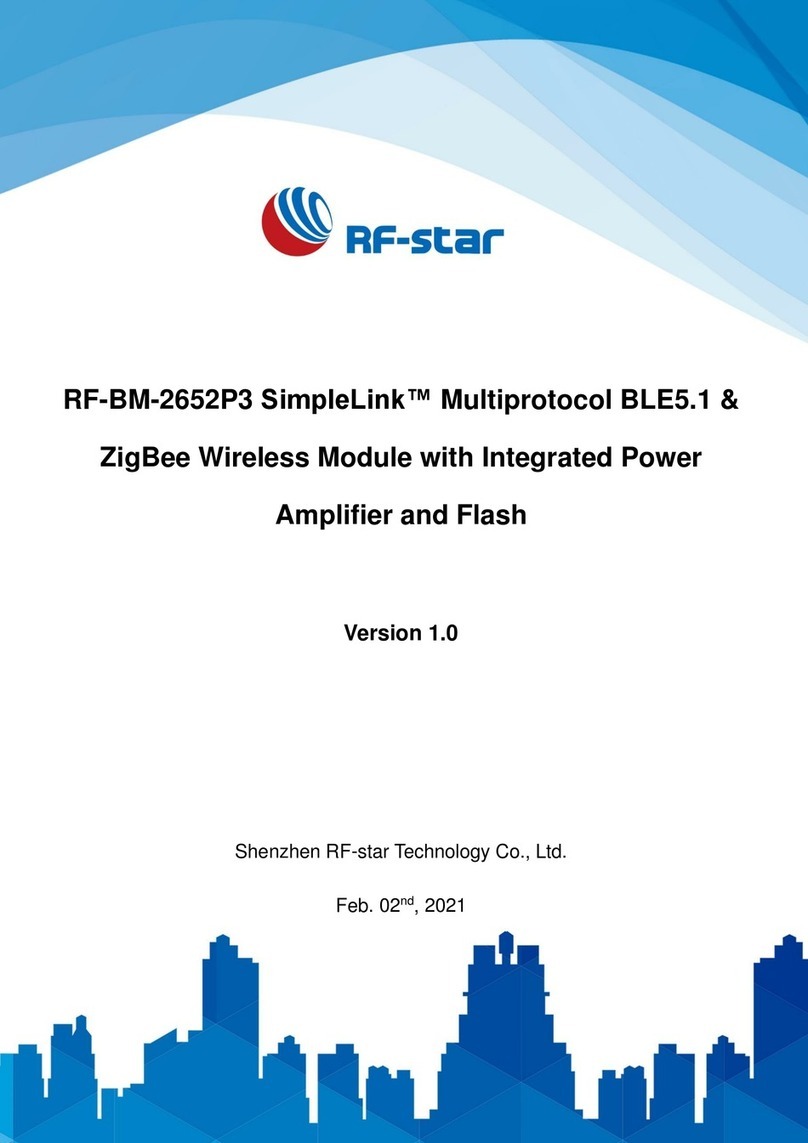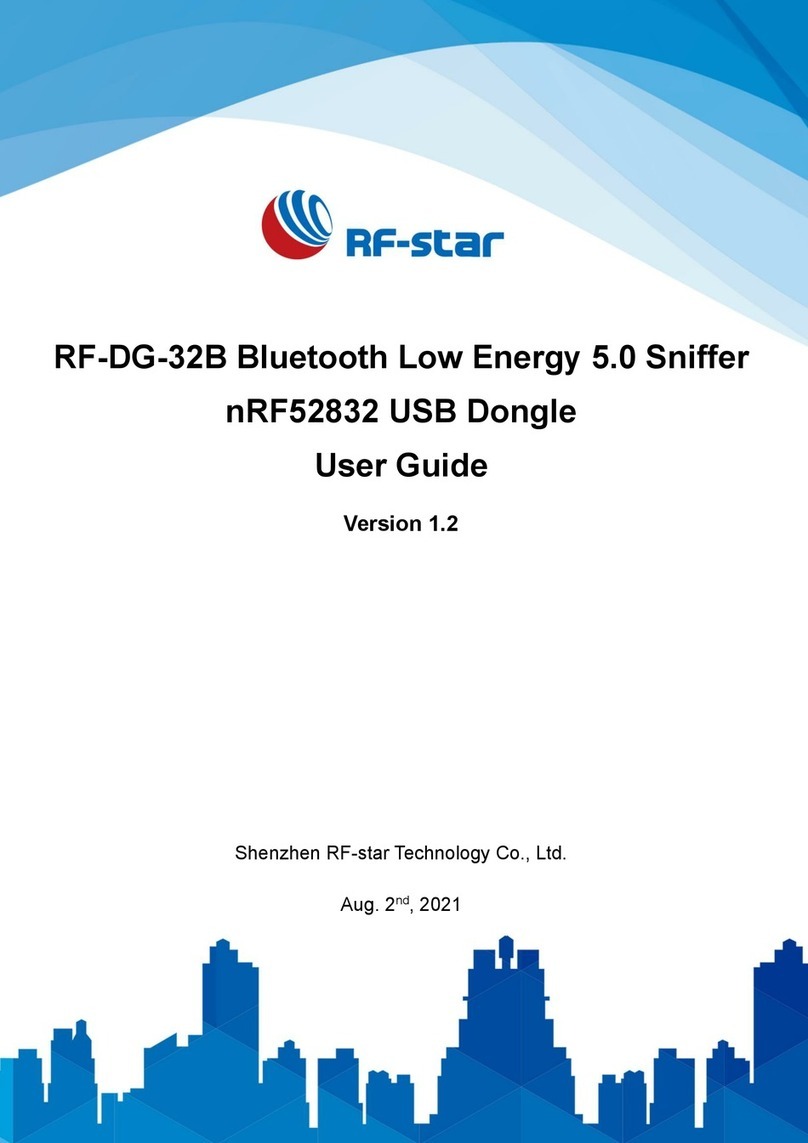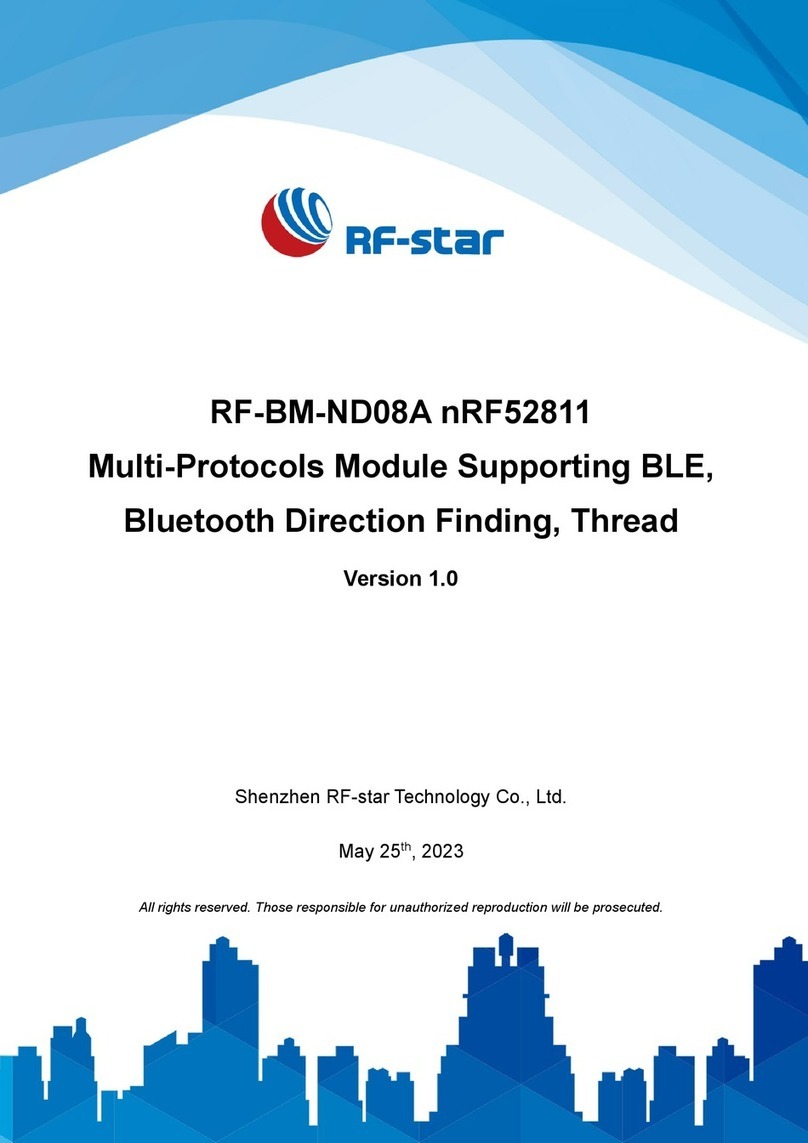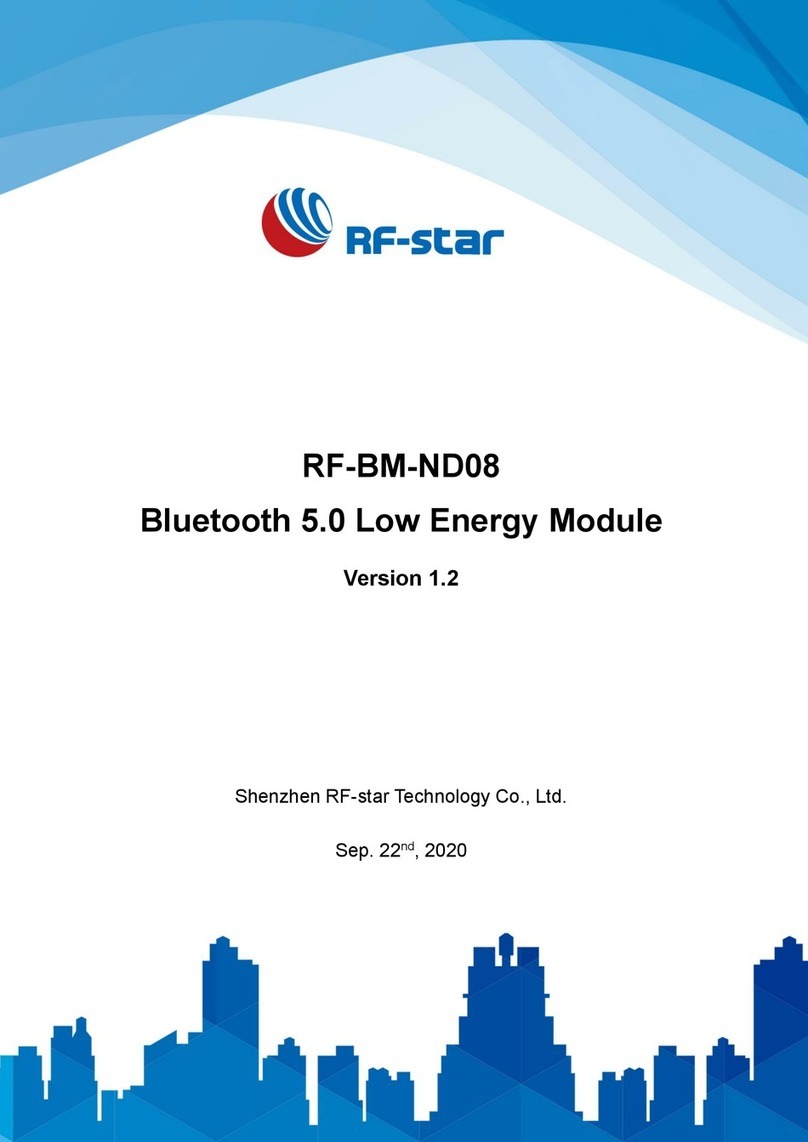
RF-BM-BG22B1
www.szrfstar.com
Shenzhen RF-star Technology Co., Ltd. Page 4 of 15
Table of Contents
1 Device Overview............................................................................................................................................................. 1
1.1 Module Series ..................................................................................................................................................... 1
1.2 Description............................................................................................................................................................ 1
1.3 Key Features ....................................................................................................................................................... 1
1.4 Applications.......................................................................................................................................................... 2
1.5 Functional Block Diagram .............................................................................................................................. 3
1.6 Part Number Conventions.............................................................................................................................. 3
Table of Contents................................................................................................................................................................ 4
2 Module Configuration and Functions ...................................................................................................................... 5
2.1 Module Parameters........................................................................................................................................... 5
2.2 Module Pin Diagram ......................................................................................................................................... 6
2.3 Pin Functions....................................................................................................................................................... 6
3 Specifications ................................................................................................................................................................... 7
3.1 Recommended Operating Conditions ....................................................................................................... 7
3.2 Handling Ratings................................................................................................................................................ 7
4 Application, Implementation, and Layout............................................................................................................... 8
4.1 Module Photos.................................................................................................................................................... 8
4.2 Recommended PCB Footprint...................................................................................................................... 8
4.3 Antenna.................................................................................................................................................................. 9
4.3.1 Antenna Design Recommendation ................................................................................................ 9
4.4 Basic Operation of Hardware Design ........................................................................................................ 9
4.5 Trouble Shooting..............................................................................................................................................10
4.5.1 Unsatisfactory Transmission Distance........................................................................................10
4.5.2 Vulnerable Module.............................................................................................................................. 11
4.5.3 High Bit Error Rate .............................................................................................................................11
4.6 Electrostatics Discharge Warnings ...........................................................................................................11
4.7 Soldering and Reflow Condition.................................................................................................................11
4.8 Optional Packaging.........................................................................................................................................13
6 Revision History ............................................................................................................................................................14
7 Contact Us.......................................................................................................................................................................15
































